Lifestyle
Is an Elimination Diet Right for You? A Nutritionist Breaks It Down

You habitually start your day feeling bloated, sluggish, or plagued by persistent headaches. You’ve tried changing your exercise routine, sleep hygiene, and even adding meditation to the mix. Nothing seems to help. Up next? Tinkering with your diet. But knowing where to begin is overwhelming. Enter elimination diets: a simpler method to identify which foods are harming your health. When executed properly (and with professional guidance), they can be transformative.
Your elimination diet roadmap is here. With your vitality in mind, we’re sharing the 411 on elimination diets. Find out what they are, if they’re right for you (spoiler alert: they might not be!), and how to successfully implement and follow one.

What is an elimination diet?
An elimination diet is a short-term eating plan. It’s less of a diet and more of a specific protocol, as it isn’t meant to last more than two months. The goal is to pinpoint food sensitivities, intolerances, or allergies that contribute to a slew of health issues (digestive problems, migraines, skin conditions, fatigue, etc.). In other words, an elimination diet is designed to identify foods that might be causing adverse reactions in your body.

How does an elimination diet work?
In theory, an elimination diet is simple: it involves removing potential trigger foods from your plate and then gradually reintroducing them. That said, practical execution requires careful planning, monitoring, and discipline. (More on the length and types of elimination diets below!)
The process involves two main phases:
- Elimination phase. Specific foods or food groups are removed from your diet for a period, usually 4-8 weeks.
- Reintroduction phase. Gradually reintroduce each eliminated food (one at a time), monitoring your body’s reactions to determine if any symptoms reappear.
What is the point of an elimination diet?
Unlike standard diets—which typically focus on weight loss—an elimination diet is more about identifying (and hopefully eliminating!) the root cause of chronic symptoms. The point is to figure out which foods trigger certain symptoms in your body. If done correctly, this process will reveal how certain foods affect your body, leading to significant improvements in symptoms like bloating, headaches, fatigue, and hives.
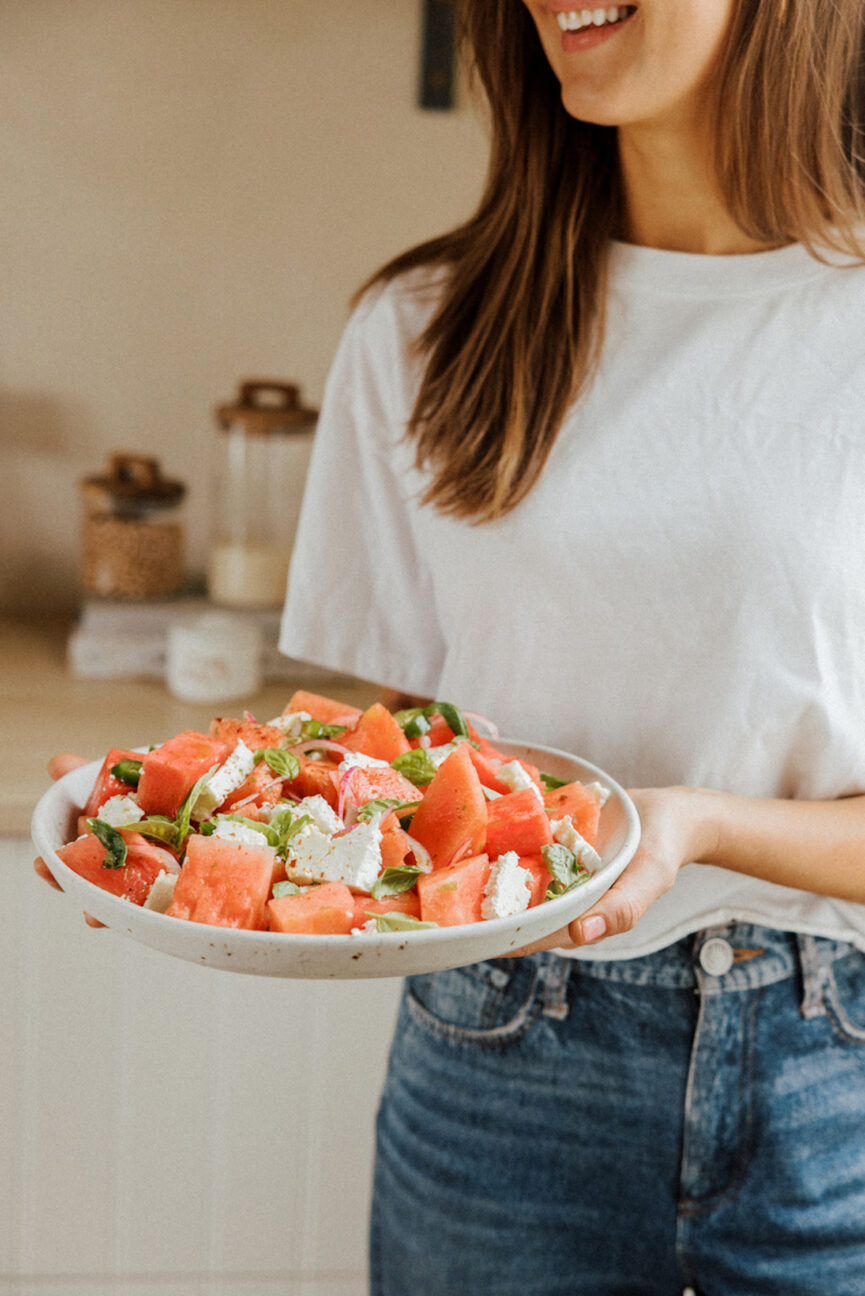
The Upsides of an Elimination Diet
Whether you’re trying to improve your energy, minimize digestive discomfort, or support your overall well-being, there are plenty of reasons to do an elimination diet.
Identifying Food Sensitivities
One of the main reasons elimination diets are popular? Their ability to pinpoint foods that cause adverse reactions. If you’re tired of throwing darts at the wall to fix your unexplained symptoms, an elimination diet is life-changing.
Personalized Nutrition
Unlike one-size-fits-all diets, elimination diets offer a personalized approach to nutrition. By understanding which foods your body doesn’t tolerate well, you can tailor your diet to suit your unique needs. Hello, bio-individuality!
Increased Awareness
Last but not least, an elimination diet encourages mindful eating. This heightened awareness leads to healthier eating habits and a better understanding of how different foods affect your body. (A win-win!)

The Drawbacks of an Elimination Diet
All of that to say, are elimination diets worth the hype? Depending your relationship with food and/or your lifestyle, they can be a slippery slope.
Restrictive Nature
Elimination diets are restrictive—full stop. This makes them difficult to adhere to and can lead to feelings of deprivation. They can make meal planning/eating out more challenging as well.
Nutritional Deficiencies
Without professional guidance, cutting out multiple food groups goes hand-in-hand with nutritional deficiencies. It’s essential to ensure you’re still getting the necessary nutrients to thrive.
Time-Consuming
The process is lengthy and requires meticulous tracking of what you eat and how you feel. Commitment is key!
Perpetuating Diet Culture
Unfortunately, elimination diets can reinforce negative aspects of diet culture. Focusing on restriction—and the potential for obsessing over food choices—mirrors disordered eating patterns.

How to Know if You Need an Elimination Diet
Let’s back up. Before embarking on an elimination diet, it’s essential to evaluate whether or not it’s necessary. After all, not everyone needs an elimination diet! But if you experience any of the following signs, it’s worth considering.
- Chronic digestive issues. Persistent bloating, gas, diarrhea, or constipation that doesn’t improve with other treatments.
- Unexplained health symptoms. Symptoms like migraines, fatigue, joint pain, or skin conditions that haven’t been diagnosed— or treated effectively—may be linked to food intolerances.
- Previous allergies. A history of allergies or food intolerances could mean you’re more susceptible to other food-related issues.
- Autoimmune conditions. Conditions like celiac disease, rheumatoid arthritis, or irritable bowel syndrome (IBS) are often linked to food sensitivities. Fortunately, an elimination diet might help manage symptoms.
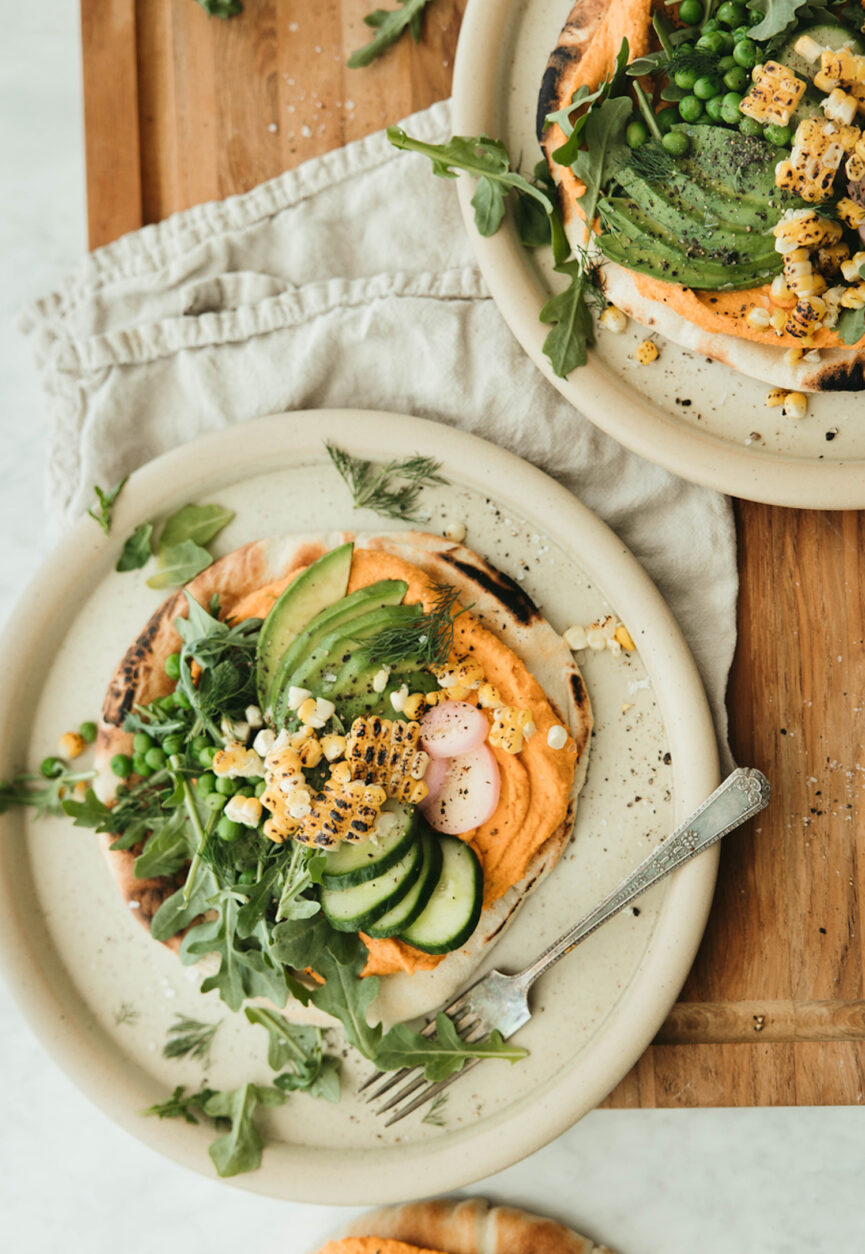
Different Types of Elimination Diets
Of course, there are a variety of ways you can approach an elimination diet. These protocols range from basic to highly specific—including certain herbs, supplements, or tinctures you’ll take in conjunction. Below are popular elimination diets.
Basic Elimination Diet
Focuses on removing the most common allergens like dairy, gluten, soy, nuts, eggs, and shellfish. This method is suitable if you have general symptoms and no known specific food allergies.
FODMAP Diet
Targets specific carbohydrates known as FODMAPs (Fermentable Oligo-, Di-, Mono-saccharides and Polyols) that can cause digestive issues. This diet is often recommended for those with IBS.
Whole30
A 30-day program that eliminates sugar, alcohol, grains, legumes, soy, and dairy to promote whole, unprocessed foods and identify potential triggers. You can read our take on Whole30 here!
Autoimmune Protocol (AIP) Diet
Designed for those with autoimmune diseases, this diet removes grains, legumes, nightshades, dairy, eggs, nuts, seeds, and processed foods. It focuses on nutrient-dense foods to reduce inflammation and promote gut health.

The Right Way to Do an Elimination Diet
No matter which elimination diet you choose, planning and monitoring are key. To guide your journey, consider the following steps:
- Consult a professional. This is so important! Your healthcare provider (or ideally, a registered dietitian/naturopathic doctor) will help plan a balanced elimination phase.
- Create a food diary. Track what you eat and any symptoms you experience. This helps identify patterns and correlations.
- Plan your meals. Prepare a list of foods you can eat and plan your meals to ensure you’re getting adequate nutrition.
- Stay committed. Follow the elimination phase—strictly—for at least two weeks. Any deviation can skew your results.
- Monitor and reintroduce. Pay close attention to your body’s responses as you reintroduce each food one at a time, spaced a few days apart. Jot down any symptoms that reappear.

How should you track your symptoms on an elimination diet?
To get the most bang for your (elimination diet) buck, you’ll need to effectively track your symptoms. And while it will feel like a chore, you’ll be thankful you did. In terms of keeping a detailed food diary, write down everything—yes, everything—you eat and drink each day. Include portion sizes and preparation methods if possible.
Alongside this, note any symptoms you experience, their severity, and a time stamp. Be specific about how you feel (i.e., fatigue). Lastly, use a consistent rating system. Create a scale (1-10) to rate the severity of your symptoms. That way, you’ll be able to easily track changes over time.
What foods are typically removed on an elimination diet?
This depends, but typical contenders include:
- Dairy (milk, cheese, yogurt)
- Gluten (wheat, barley, rye)
- Soy (tofu, soy milk, soy sauce)
- Eggs
- Nuts and seeds (peanuts, almonds, sunflower seeds)
- Shellfish and fish
- Corn
- Nightshade vegetables (tomatoes, potatoes, eggplants, peppers)
- Ultra-processed foods and additives (artificial sweeteners, preservatives)
- Caffeine and alcohol

What to Eat During an Elimination Diet
On the flip side, what can you eat during an elimination diet? Generally speaking, focus on whole, unprocessed foods that are unlikely to cause reactions. For most people, safe options include:
- Proteins. Lean meats, poultry, fish, and plant-based proteins like lentils (if not avoiding legumes).
- Vegetables. Most non-starchy veggies such as leafy greens, broccoli, and carrots.
- Fruits. Berries, apples, pears, apricots, and bananas.
- Grains. Gluten-free grains like quinoa, rice, and oats (if not avoiding grains).
- Healthy Fats. Olive oil, coconut oil, and avocados.
Taking Supplements on an Elimination Diet
As mentioned, it’s normal for certain nutrients to take a dip while you’re on an elimination diet (given you’re restricting certain foods/food groups). Thankfully, supplements can help fill those gaps. Consult your healthcare provider, but the following supplements are worth the pantry space—elimination diet or not:
- Multivitamin. A comprehensive multivitamin can help cover general nutrient gaps.
- Calcium. If you’re avoiding dairy, a calcium supplement can help maintain bone health.
- Vitamin D. Like calcium, vitamin D3 is essential for bone health, immune function, and healthy hormones.
- Omega-3 Fatty Acids. If you’re avoiding fish, consider a high-quality fish oil for heart and brain health.
- Probiotics. To support gut health, especially if you’re eliminating foods that naturally contain probiotics like yogurt.
- Magnesium. Important for muscle and nerve function, magnesium is always worth the shelf space (particularly if you’re eliminating nuts and seeds).
- B Vitamins. If you’re not eating grains, ensure you get enough B vitamins for energy metabolism and overall health.
- Iron. If avoiding red meat and certain grains, consider an iron supplement to prevent deficiency.
Transitioning Back to a Regular Diet
After successfully identifying problematic foods, how do you transition back to your regular diet? With the help of your healthcare provider/dietitian, you’ll want to reintroduce foods slowly. Have patience! Gradually reintroduce each eliminated food, one at a time, while closely monitoring your body’s reactions. If your symptoms return with a vengeance, you may want to eliminate that food long-term (other than on special, infrequent occasions!). And if that’s the case, find suitable alternatives to maintain nutritional balance.

The Final Word on Elimination Diets
Ultimately, elimination diets are a very valuable tool for identifying food sensitivities—and for that matter, improving your overall health! Once you recognize your body’s unique reactions to different foods, you can make informed dietary choices that make you feel energized, balanced, and vibrant. With a trusted provider’s guidance, you’ll be able to tailor your elimination diet to meet your body’s unique needs. Cheers to a healthy, thriving body.
Lifestyle
16 Low-Carb High Protein Vegetarian Recipes

Sometimes I wish I was the type of person who could just grab a bite to eat without feeling like a high-maintenance eater. A night out would be so much simpler if I didn’t have to ask about gluten-free alternatives or meatless versions on the menu. But, ultimately, after years of trial, error, bites, and swallows, I’ve learned what makes my body feel (and look) better. And as it turns out, my body thrives when my meals are centered around low-carb high-protein vegetarian recipes.
While there are definitely more options in the restaurant world today, I always prefer cooking at home and discovering recipes that meet my nutritional needs (not to mention tailored tastebuds!). Which, admittedly, is still a bit of a challenge.
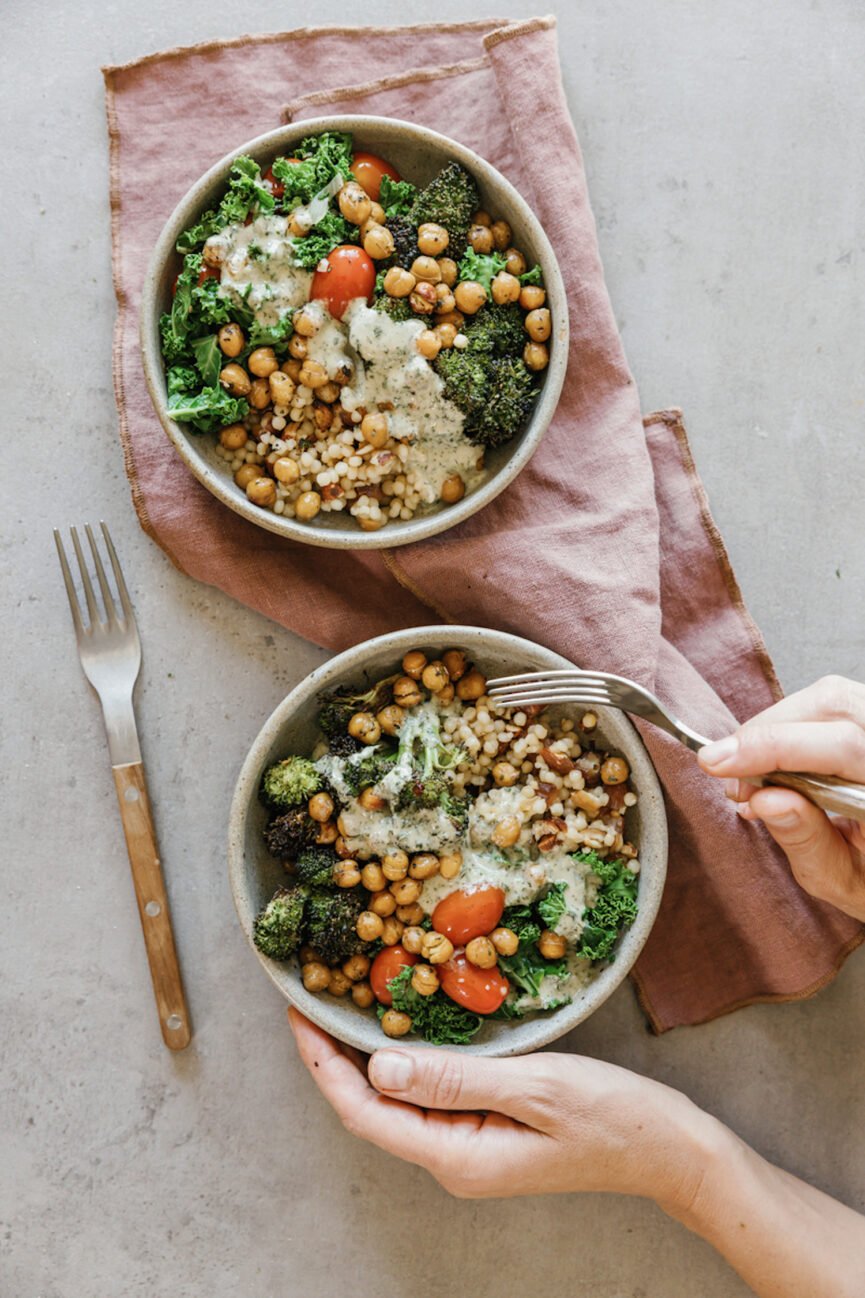
The Best Vegetarian Protein Sources
Before we roll into the low-carb high protein vegetarian recipes I found, I wanted to share a cheat sheet with a few of my go-to vegetarian protein sources that might help you on your plant-based eating journey:
Chickpeas: almost 11 grams protein / 35 grams carbohydrates per cup (cooked)
Paneer (an unaged Indian cheese made from curdled milk and acid): 21 grams protein / 3.5 grams carbohydrates per 3.5 ounce serving
Tofu: 8 grams protein / 3.5 gram carbohydrates per 2 ounce serving
Black Beans: 19 grams protein / 40 grams carbohydrates per cup (cooked)
Lentils: almost 18 grams of protein / approximately 40 grams carbohydrates per cup (cooked)
Eggs: 6 grams protein / 0.6 grams carbohydrates per egg (cooked)
Tempeh (a fermented soybean product): 34 grams of protein / 13 grams carbohydrates per cup
Halloumi (a brined cheese that originated from Cyprus): 7 grams of protein / 0 grams carbohydrates per one-ounce serving

16 Low-Carb High-Protein Vegetarian Recipes
When I was asked to share my favorite low-carb high protein vegetarian recipes, I welcomed the opportunity to take a good look into my eating archives. As a vegetarian, I’ve found that recipes often tick two out of three boxes for me: super low carb and plant-forward but little to no protein or they’re vegetarian with heaps of protein, but a total carb fest. As I said, it’s a challenge, albeit a delicious one.
With all of that in mind, here are my favorite recipes (you’ll see lots of the proteins listed above). Think: 1) high in protein, 2) low in carbs, and 3) all vegetarian. Let’s get to it.
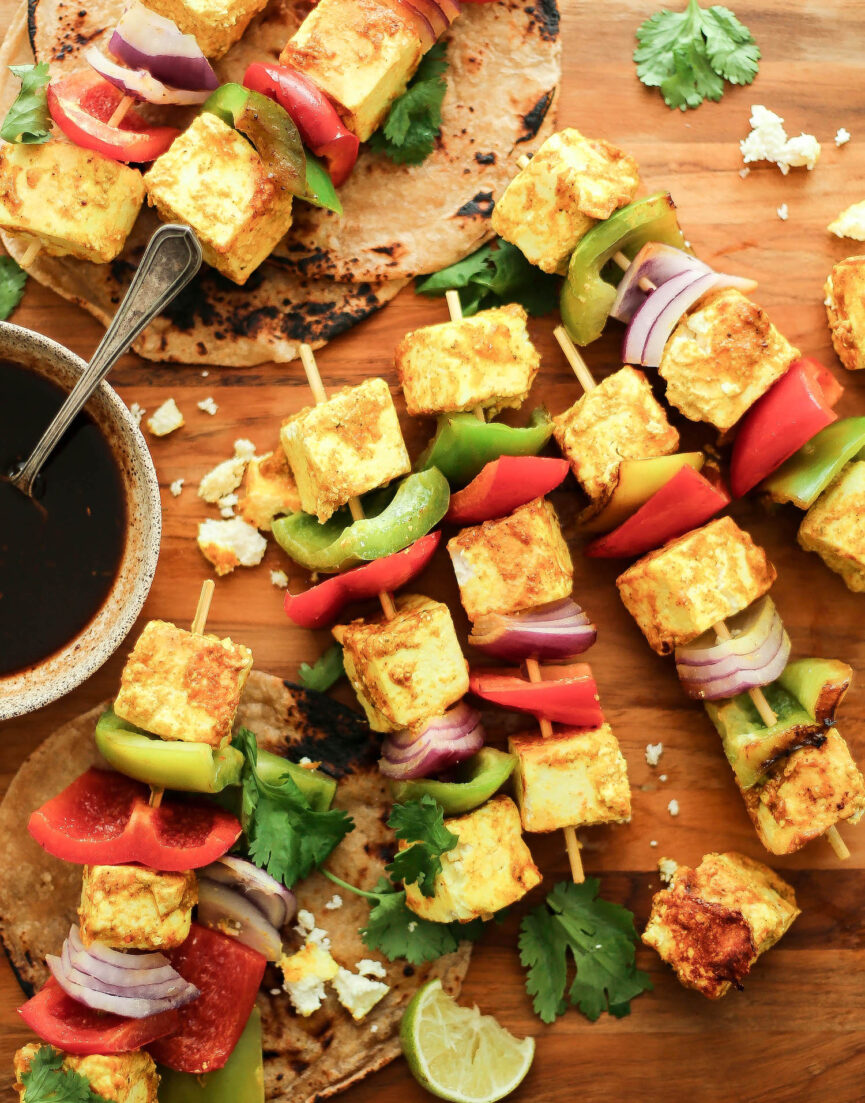
Paneer Tikka Kebabs
Why We Love It: Think kebabs are just for summer outdoor hangs? Think again. These paneer tikka kebabs can be assembled quickly, and the garam masala, cumin, and chili powder add delicious, spicy interest. They’re tasty all year round.
Hero Ingredient: Paneer adds a protein punch.
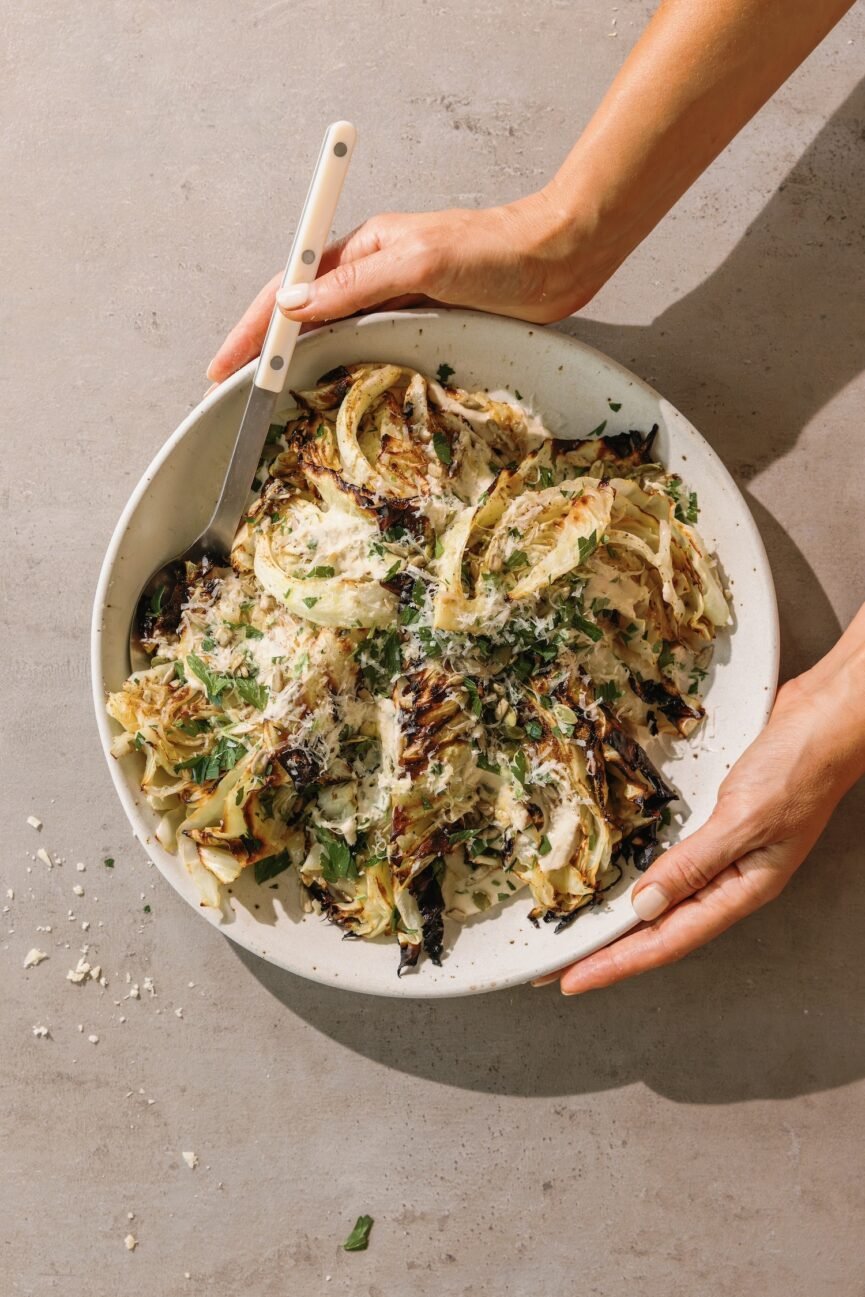
Charred Cabbage With Cashew Cream
Why We Love It: That’s right—cabbage is the newest “unsexy” veg we’re making cool again. Camille brilliantly roasts the cabbage until it’s caramelized and charred. It plays perfectly with the plant-based, tahini-laced cashew cream.
Hero Ingredient: As Camille says, charred cabbage gives major main character energy.
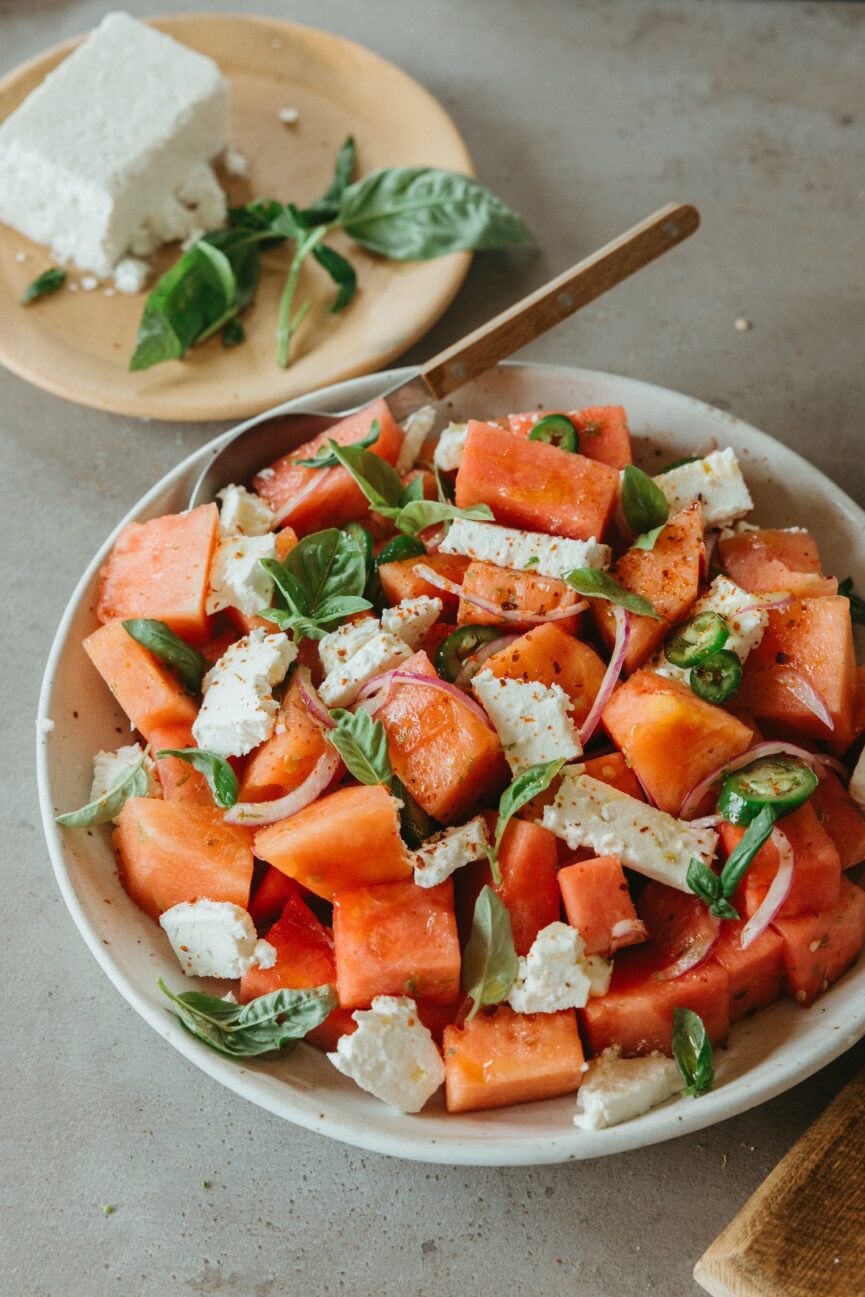
Spicy Watermelon Feta Salad
Why We Love It: This super simple recipe gives all the romanticize-your-life, al fresco vibes. And though I’d recommend serving it alongside a more satisfying main, the feta gives a nice boost of protein for a well-rounded mea.
Hero Ingredient: The basil garnish at the end adds the perfect amount of freshness.

Crispy Torn Halloumi Salad
Why We Love It: This salad has everything. Texture, color, and yes—protein. It’s a delicious lunchtime staple, combining creamy avocado, crisp and crunchy cucumber, and plenty of herbs.
Hero Ingredient: If you’re not adding crispy halloumi (OK, fresh is delicious too) to every salad you make from here on out, what are you doing?

Asparagus Frittata with Goat Cheese and Spring Veggies
Why We Love It: Frittatas are the ultimate fridge clean-out recipe. Load up your pan with whatever veggies are on their last legs. In the case of this recipe, it’s packed with plenty of spring veggies (think: mushrooms, baby potatoes, and onion) and finished off with creamy, tangy goat cheese. It’s a perfect breakfast, lunch, or dinner meal.
Hero Ingredient: Load on the fresh herbs at the end. They add so much flavor—and make the final result all the more stunning.
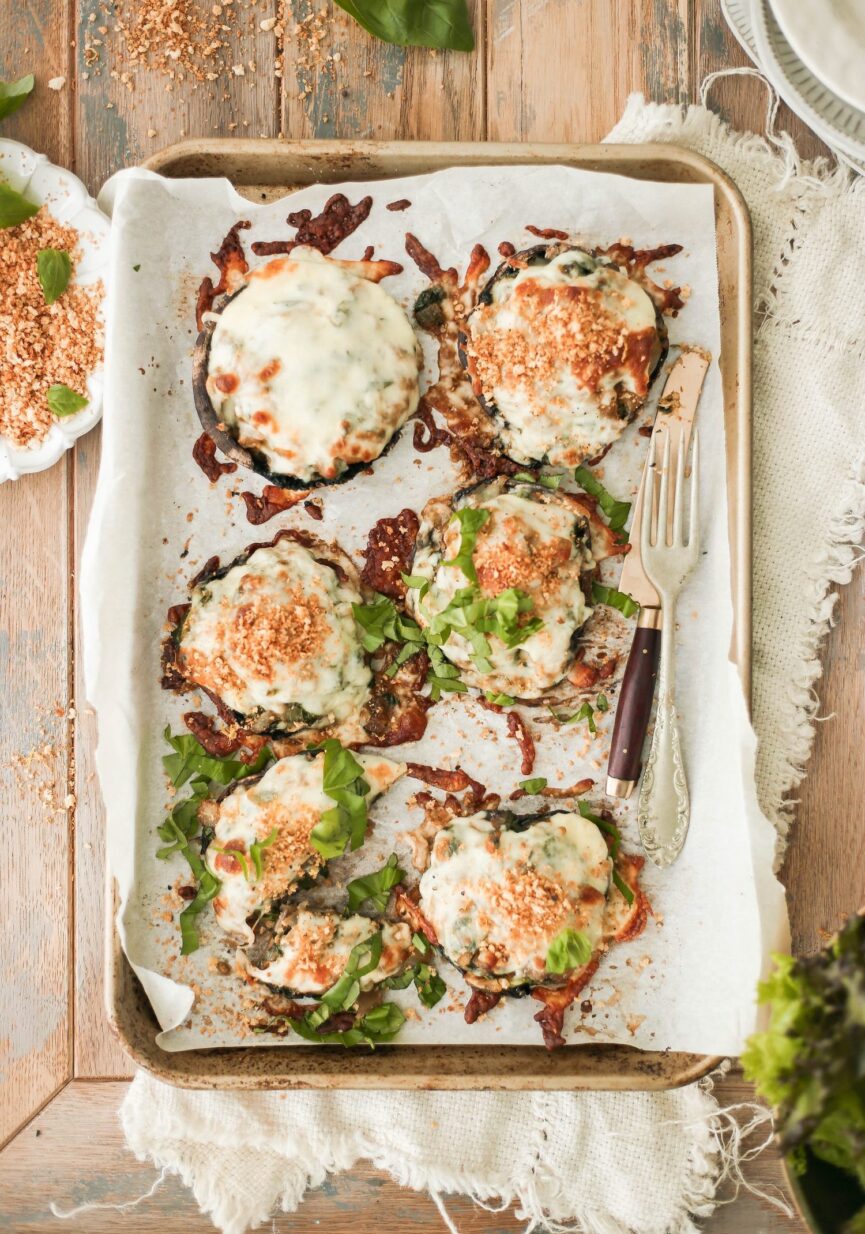
Caramelized Onion and Spinach Stuffed Portobello Mushrooms
Why We Love It: Sure, any vegetarian has had their fair share of portobello mushrooms. But trust me: this is not at all like the rubbery, watery ‘shrooms of yore. It’s the mozzarella, parmesan, and crispy breadcrumbs that sets this dish apart.
Hero Ingredient: Those toasted breadcrumbs yield the perfect amount of crunch.
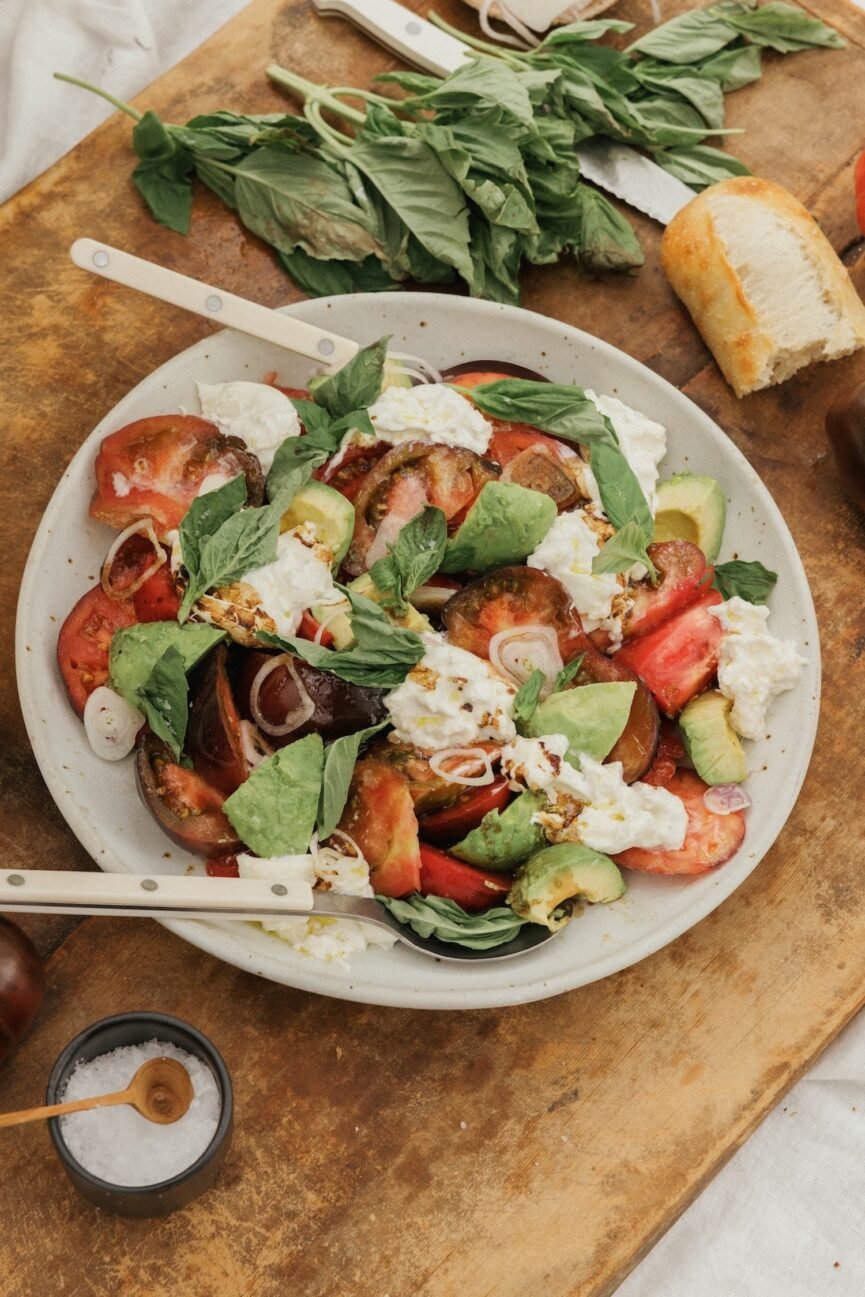
Avocado Caprese Salad
Why We Love It: A gorgeous mix of perfectly ripe avocado, tomatoes at their peak, fresh-torn basil, and creamy burrata all topped with a big pinch of flaky salt. This is caprese with the volume turned up—you’re going to love it.
Hero Ingredient: The avocado deserves top billing. Though it’s not a staple in the classic caprese, I’ll be adding it to all my Italian-inspired salads from here on out.
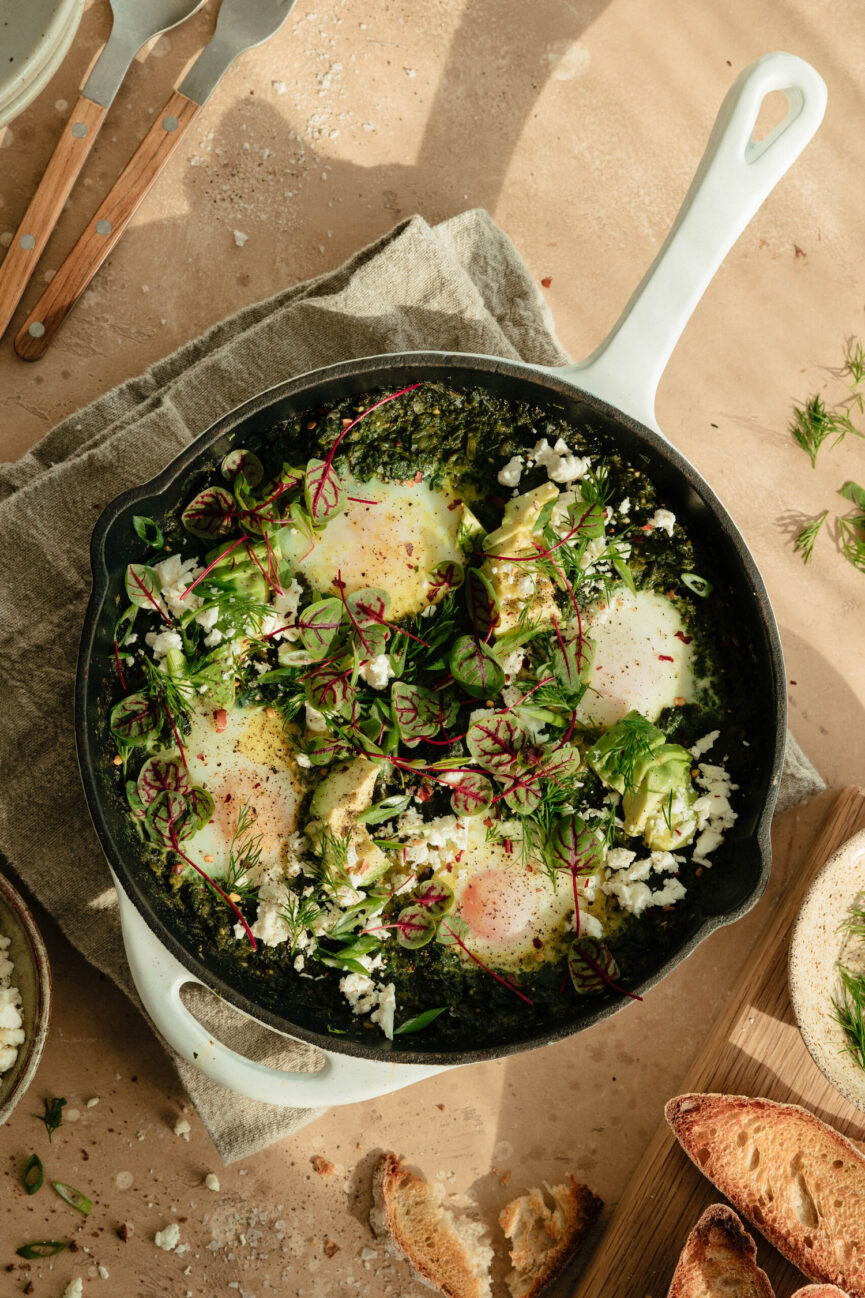
Green Shakshuka
Why We Love It: Traditional shakshuka features a spicy, tomato-based sauce. But in the spirit of switching things up every so often, this version leans on spinach and cream for a vibrant, fresh-tasting spin. If your fridge needs a good clean-out, this is the recipe to make.
Hero Ingredient: Cumin, coriander, and paprika are the ultimate spice trifecta.
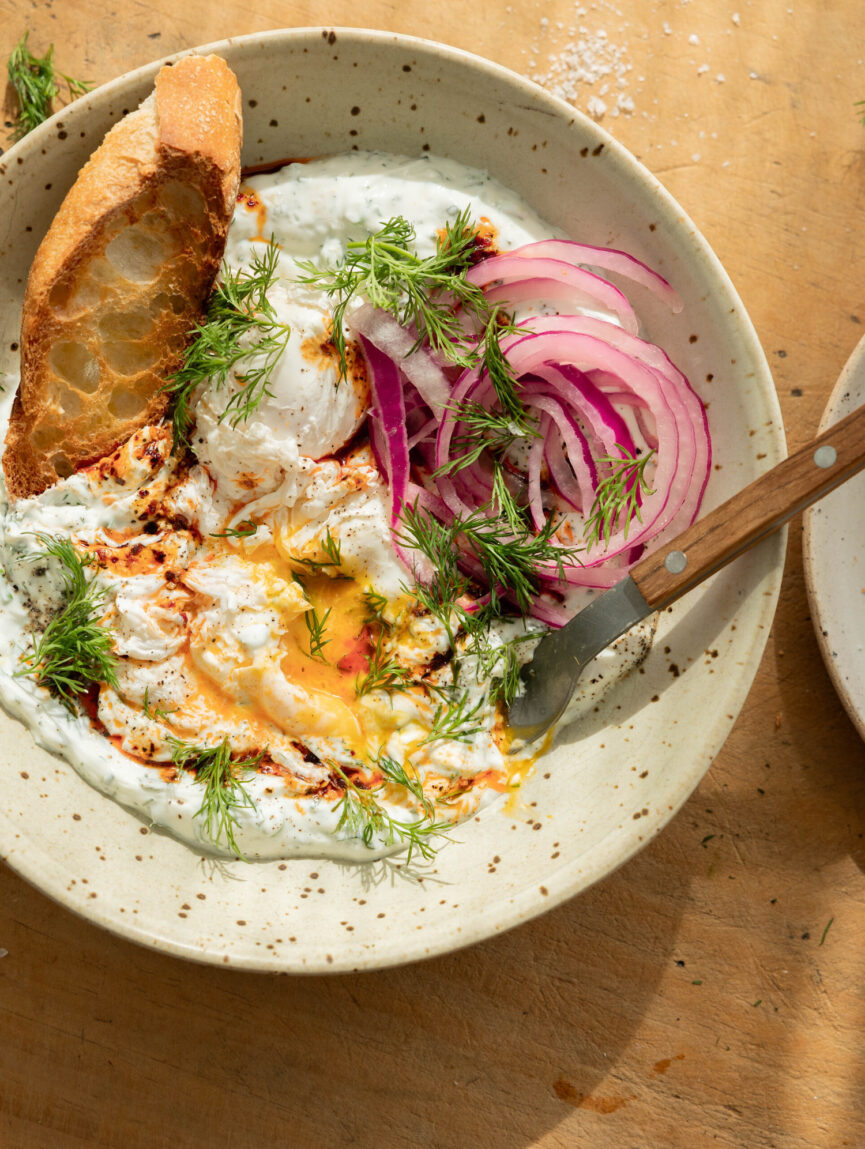
Spicy Turkish Eggs Breakfast Bowl
Why We Love It: Turkish eggs are making their way across the social space, trending on all the platforms I find myself on. But these are more than a passing moment—they deserve a permanent spot in your breakfast and lunch rotation. A simple, spicy Greek yogurt base topped with perfectly-poached eggs. Obviously, a crunchy, toasty bread (take your pick) is the perfect utensil replacement.
Hero Ingredient: This recipe is the reason you’ll learn to perfect your poached eggs.

Mediterranean Kale Salad
Why We Love It: If your salad game is looking a little bland, switch things up with this Mediterranean-inspired mix. Crunchy chickpeas, creamy avocado, and crisp greens—not to mention a whole block of feta. Yes, this is protein-packed perfection.
Hero Ingredient: Give it up for the honey-tahini dressing. You’ll be pouring it over everything from here on out.
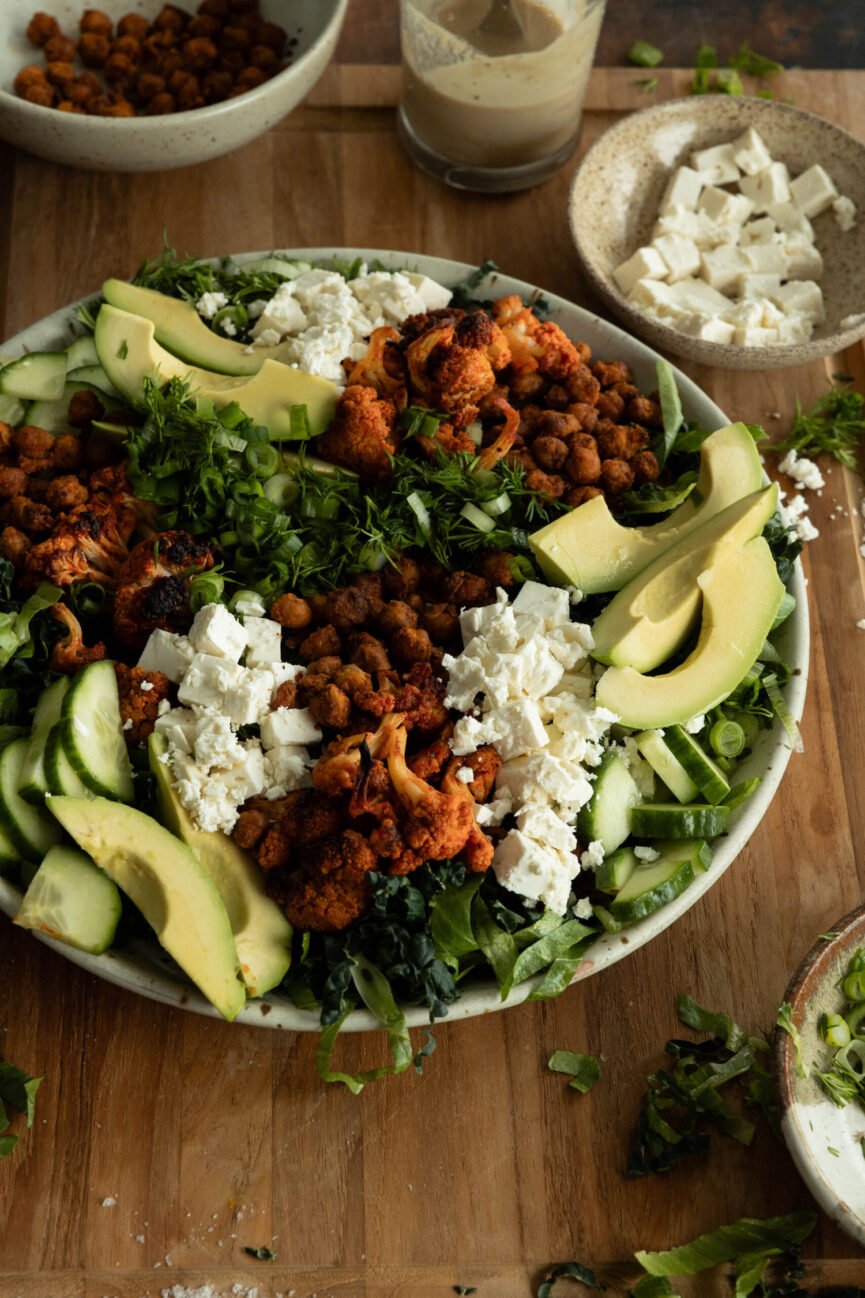
Smoky and Spicy Cauliflower Salad
Why We Love It: This is my go-to lunchtime salad. The smoky and spicy cauliflower (hot sauce, honey, and paprika give it all the flavor) is so easy to prepare in advance. I simply reheat it in the air fryer, then toss it over of the other salad components. Feta, chickpeas, and avocado help make this salad all the more satisfying.
Hero Ingredient: After having this salad, you won’t want to eat cauliflower any other way.
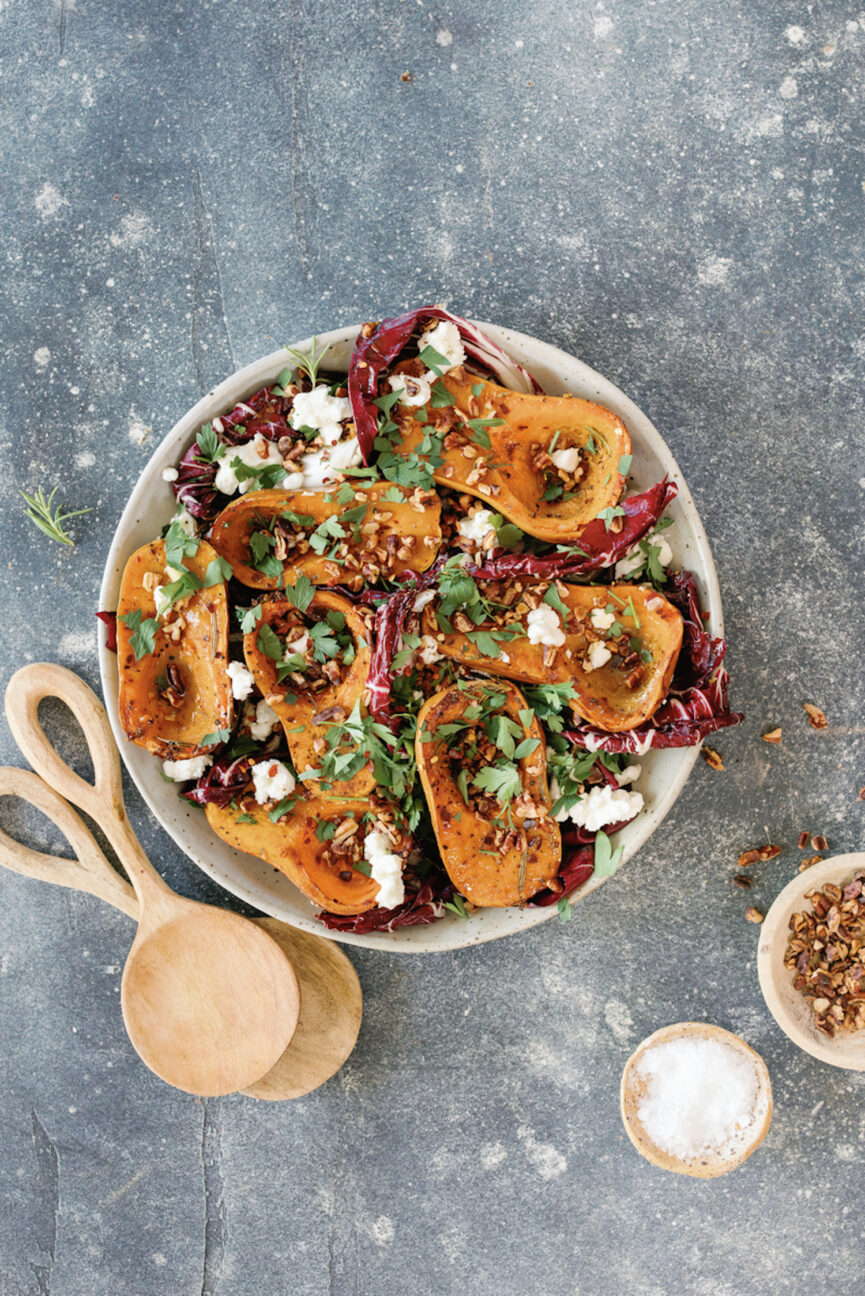
Roasted Honeynut Squash with Hot Honey, Pecans, and Rosemary
Why We Love It: Roasted honeynut squash stuffed with crunchy pecans, earth rosemary, and drizzled with hot honey. This veggie dish is a total showstopper. (And so pretty to capture on camera—your Instagram will thank you.)
Hero Ingredient: Hot honey makes everything all the more delicious. Drizzle it on your pizza and you’ll see what I mean.

Vegetarian Black Bean & Sweet Potato Chili
Why We Love It: There’s nothing quite like a hearty chili to warm your bones on a cold day. We love how the sweetness from the honey and sweet potato perfectly complements the spicy kick from chili powder.
Hero Ingredient: It’s all about the toppings. Stick to radish, grated cheese, avocado, and herbs if you’re wanting to keep the carbs on the lowdown.
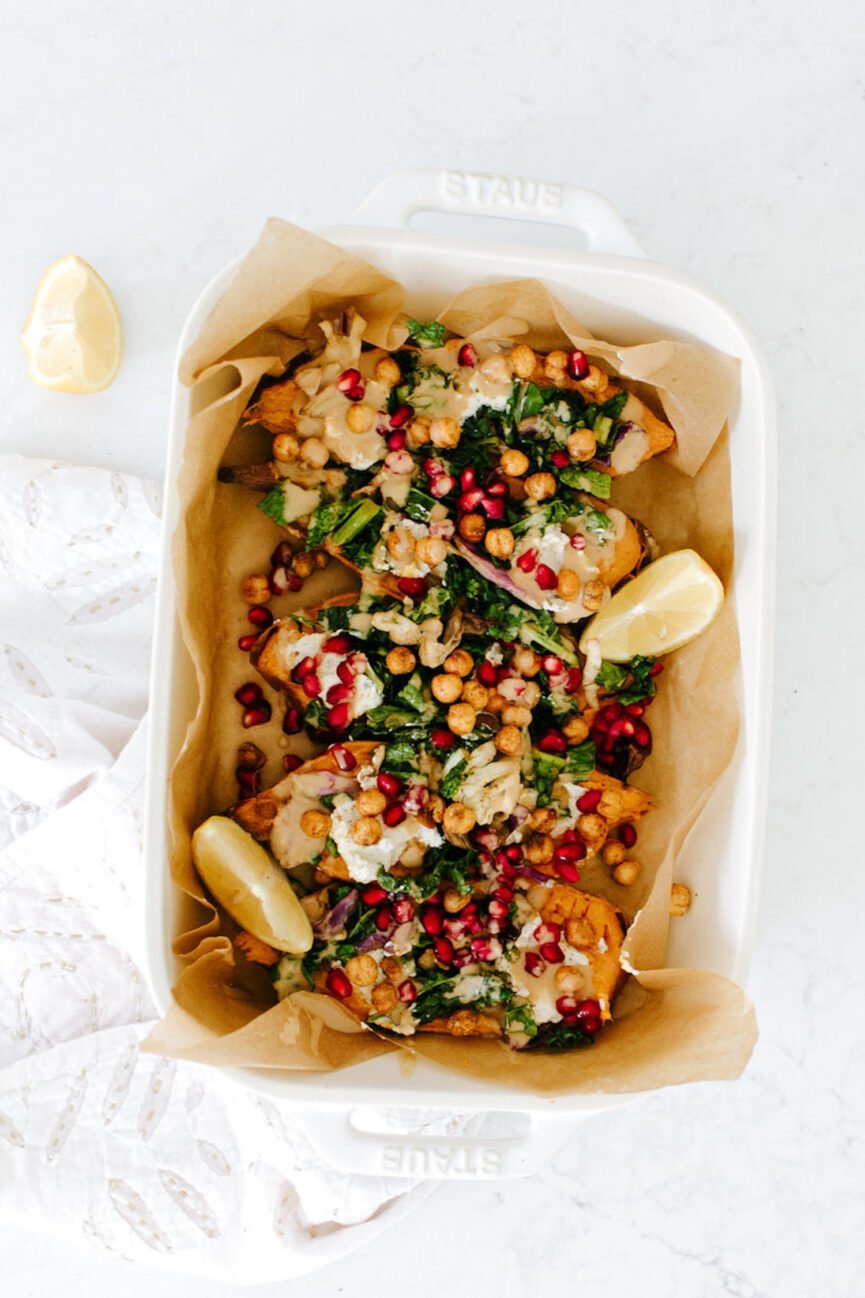
Autumn Stuffed Sweet Potatoes
Why We Love It: Straying away from your usually boring one-note sweet potato recipes, this one from Camille truly shines with the unique additions of goat cheese, pomegranate seed, and tahini sauce. And okay, sweet potatoes aren’t exactly the lowest in carbs, but with the high-protein additions from the chickpeas and tahini, we decided this recipe needed a spot on the list.
Hero Ingredient: A squeeze of lemon right before serving—perfection.
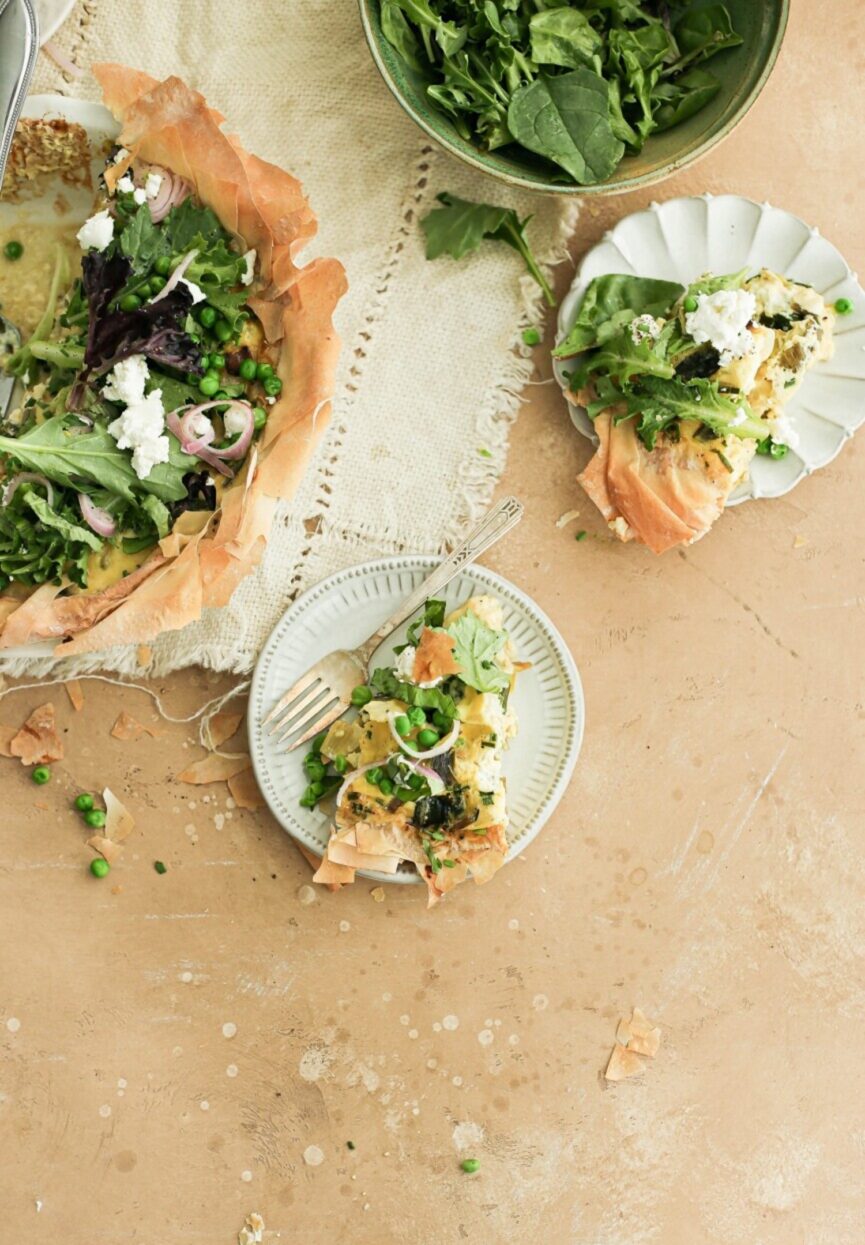
Spring Onion and Goat Cheese Quiche
Why We Love It: Quiche: it’s not just for breakfast, anymore. Satisfy your craving for a hearty meal with this low-carb everything-but-the-kitchen-sink vegetable quiche mixed with creamy goat cheese.
Hero Ingredient: The incredible, edible egg: high protein, low carb at its finest.

Black Bean and Pineapple Salsa Lettuce Boats
Why We Love It: A protein and fiber-packed meal, snack, or app, toss together a few simple ingredients like a can of black beans, red bell pepper, cilantro, and the key to the dish, sweet, juicy, pineapple.
Hero Ingredient: Adobo chipotle sauce adds a smoky, spicy twist to the dish.
Lifestyle
The Best Luxury Wellness Products, According to Editors

It’s no secret that Camille Styles editors are obsessed with weaving wellness into every part of our lives. Despite how much the terms are thrown around, balance and self-care are more than just buzzwords—we consider them essential. As we move through the year, I’ve found our team chatting more about the best luxury wellness products that elevate the mind and spirit. We’re talking about those mindful splurges that feel indulgent yet necessary. Think of them like a spa day in the comfort of your home or that one serum you’ve been eyeing that promises to do it all. (And turns out, it does.)
This is your VIP pass to what’s buzzing in our Slack channels right now. From cutting-edge sleep tech that promises the best rest of your life (seriously, it’s game-changing) to must-haves that’ll boost your physical and mental wellness, there’s something here for everyone.
Featured image from our interview with Sabeena Ladha.

The Best Luxury Wellness Products Our Editors Recommend
Whether you’re looking to upgrade your self-care routine or simply want to stay on top of what’s new in the world of wellness, this guide is your ticket to experiencing all the feel-good vibes you deserve. Dive in!
HigherDose Infrared Sauna Blanket
Why we love it: “When I’m really in my wellness flow, I’ll use this in the morning post-workout to boost circulation and promote muscle recovery. Then, at the end of the day, I’ll zip myself back up to experience a deeply relaxed state before going to bed. I’ve had mine for nine months and credit it with an overall improved sense of well-being. (Not to mention, the glowiest skin of my life.) I’ve never been happier to feel like a human hot pocket.” — Isabelle, Managing Editor
SEASONS Sand Grey Aero SM Diffuser
Why we love it: “My energy is deeply influenced by my environment, so I love to create a calming vibe while I’m working from home. I’ve had other diffusers in the past, but this one is the best I’ve come by. Why? First, it doesn’t require any water or heat. Simply pop in your essential oil bottle, select the duration, and press start. Let’s also chat about the design. Stunning.” — Isabelle, Managing Editor
Hatch Restore 2 Alarm Clock
Why we love it: “I can’t say enough good things about my Hatch 2 Restore Alarm Clock. Not only does it make my mornings gentle and calm, but my evening routine allows me to peacefully unwind at the end of the day. I didn’t really understand the hype behind a good night’s sleep, and thanks to Hatch, I now never go without one.” — Anna Decker, Social Media and E-Commerce Manager
Active Botanical Serum
Why we love it: “This incredibly nourishing facial oil has been my favorite beauty splurge for years. The brand’s Phyto Radiance Infusion is a 21-day process which begins with whole plants that infuse powerful nutrients into the formula. It delivers restorative phytonutrients, balancing minerals, brightening vitamins, free-radical fighting antioxidants, moisturizing fatty acids and nourishing omegas 3, 6, 7, and 9 to give skin a noticeable radiance.” — Camille Styles, Editor-in-Chief
Beast Health Blender
Why we love it: “I’m a smoothie-for-breakfast gal through and through. And while I thought I’d hold out for a Vitamix when the splurge made sense, I got influenced to take the more aesthetic route—and I’m so glad I did. The Beast looks beautiful on my countertop and cuts through frozen fruits with ease. My mornings are made all the better because of it.” — Isabelle, Managing Editor
Frigidaire Nugget Ice Maker
Why we love it: “I was always skeptical about nugget ice machines until I bought my own last year. As someone who has always struggled to stay hydrated throughout the day, I’ll try anything to get a little extra H20 into my system! I definitely consume more water (and Poppi, seltzer, etc.) at home thanks to this easy-to-use gadget, and every glass I pour myself truly does feel like a little treat! My friends and houseguests always enjoy indulging in some of the ‘fancy ice’ whenever they come to visit, too.” — Sarah Lyon, Design Editor
Omnilux Contour Face
Why we love it: “I’ll be honest: one of my favorite dermatologists influenced me to buy this. I have sensitive, inflamed skin, which can often look irritated. I use it for its anti-inflammatory benefits and to stimulate collagen production. Like most skincare treatments, consistency is key, but the good news is it only takes 10 minutes per session. While red light treatments at the spa are more potent, this is the best at-home treatment I’ve tried.” — Brandy Joy Smith, Motherhood Contributor
Apple Watch SE GPS + Cellular
Why we love it: “Keeping it real—even though I consider myself a bit of a gym rat, getting in my steps can be a challenge. I could sit and write at my desk all day, truly. I love that my Apple Watch tracks my steps and gives me reminders throughout the day to stand up and move around. I’m also connected with a few friends who have Apple Watches as well, and we cheer each other on via texts after workouts. It’s so fun! Not to mention I can text and take calls with it too. I’d be lost without my Apple Watch!” — Kristen Garaffo, Design Editor
Casa Zuma Vision Board Kit
Why we love it: “This linen board and accompanying journal are how I set intentions at the beginning of the year—then visualize the highest version of myself every single morning when I sit down in front of it with my coffee. It’s a wellness tool that doubles as art in my office. And I truly believe that investing in your own personal growth is the most valuable investment we can make!” — Camille Styles, Editor-in-Chief
Worn Velvet Blackout Curtain
Why we love it: “While I definitely didn’t purchase my bedroom curtains with sleep quality in mind (I chose them for their dark green hue and velvet texture!), I honestly can’t imagine winding down without them. Their blackout function is incredible and transforms my bedroom into a pitch-black, hotel-like space every night—which is essential for someone who lives in bustling NYC! Whenever I’m at my parents’ house and am woken up by light streaming through my windows first thing, it really makes me miss my curtain set.” — Sarah Lyon, Design Editor
Oura Ring Gen3 Horizon
Why we love it: “After having my Oura ring for a year and a half, I’m officially ready to give it my seal of approval. At least once a week, I proselytize to someone who didn’t ask about how much I love my Oura. It’s my ultimate sleep tracker, keeps me on my step and activity goals, and also helps with cycle tracking. For me, Oura has been incredibly helpful in finally figuring out and leaning into my personalized sleep routine, which I’ve found to help in so many other aspects of my wellness goals. And as someone who hates wearing watches and bracelets, I love that the ring blends in with the other ring stacks on my fingers.” — Suruchi Avasthi, Food Editor
Loftie Lamp
Why we love it: “Wellness tech has become a big part of my life over the last year, and the Loftie Lamp has become one of my favorite parts of my sleep routine. Adding to the warm lowlight vibe I like to create in my apartment in the evening, the best part of the Loftie Lamp for me is its LED red light option. Helping to improve your sleep quality and melatonin levels before bed, it’s become a signal to my brain to begin to wind down for bed with a warm glow that makes my bedroom feel extra cozy. Plus, I love that it’s connected to an app on my phone that I can turn on and off, and adjust the light as needed remotely!” — Suruchi Avasthi, Food Editor
Women’s Outwork
Why we love it: “CrossFit is what keeps both my mental and physical health in tip-top shape. If you go to the gym, you know that shoes can make or break your experience, and NOBULL trainers are my current go-to. I love that they’re flat and slightly cushioned, making them great for both strength training and cardio. They’re just as good for squats and deadlifts as they are for agility workouts and short runs. I also love that they come in a ton of different styles and colors, so you can coordinate them with your gym fits!” — Kristen Garaffo, Design Editor
Lifestyle
The Best Greek Islands for Every Type of Traveler

The post The Best Greek Islands for Every Type of Traveler appeared first on The Blonde Abroad.
-

 African History5 years ago
African History5 years agoA Closer Look: Afro-Mexicans 🇲🇽
-

 African History7 months ago
African History7 months agoBlack History Facts I had to Learn on My Own pt.6 📜
-

 African History5 years ago
African History5 years agoA Closer Look: Afro-Mexicans 🇲🇽
-

 African History1 year ago
African History1 year agoMajor African Tribes taken away during the Atlantic Slave Trade🌍 #slavetrade #africanamericanhistory
-

 African History1 year ago
African History1 year agoCameroon 🇨🇲 World Cup History (1962-2022) #football #realmadrid #shorts
-

 African History6 months ago
African History6 months agoBlack History Inventors: Mary Kenner 🩸
-

 African History1 year ago
African History1 year agoWhat did Columbus Find in 1493? 🤯🔥🔥 #history #civilization #mesoamerica #africa #kemet
-

 African History1 year ago
African History1 year agoNo African pre-Columbus DNA? 🤯🤯 #history #mesoamerica #mexico #african
























